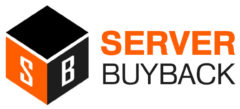In today’s era, where cloud solutions are considered to hold the future, it is yet imperative to maintain and improve your hardware infrastructure. This is because you use these devices for the day-to-day operations and are important for running your business.
There comes a point when the hardware of your computer becomes obsolete or the software you are using becomes obsolete. This fundamentally signals that your device is not capable to carry out the operations proficiently or lacks the support that is required to keep a secure environment. Therefore, being positive in getting these older equipment or devices is the key. More than 50% of small business disasters occur due to the hardware failures or software crashes and his further leads to low productivity and lost profits.
Why Refresh?
To get away with the hardware failures, it is vital to put into operation a hardware refresh cycle keeping your business in mind. The primary or initial step in this progression is to find out if your hardware really needs replacement. You need to take into account two things while evaluating your current hardware. These are performance and recurring issues.
Performance – It points to keeping a check on how well your device is running. When your system starts performing at a comparatively slow pace, it directly impacts your productivity. Performance issues can be due to several parameters like software issues or congested hardware. There are times when your trouble could be resolved by bringing in extra resources to your existing hardware. This can be as easy as an upgrade, but generally this doesn’t wholly resolve the performance issue.
Technological Obsolescence – You can certainly drive the updates till you want. But by this time your competitors might have carries out the required upgrades that exceed the functionality of your existing technology. By letting the technology cross, you are at higher risk of becoming technologically obsolete and thus will have to encounter certain problems. You can certainly bond with your present equipment, but its maintenance will start costing you more with time. Eventually, you will be left no other solution but to replace it.
Ageing System – When your system is old and land you in recurring issues, it can continue to complete system outages. These outages straightforwardly have an effect on the productivity of your businesses as well as the bottom line. When an outage exists repetitively, it takes the form of an issue that needs an immediately addressal.
Less Failures and Downtime – When your older systems become outdated, you start facing increased failure rates and an analogous increase in the downtime. This situation is likely to take place as the business will go on to compete, whilst the equipment will languish, become old and lose its feasibility.
Hardware Lifespan – It is certain that the lifecycle of a machine depends upon its role in your business, but it is a good notion to reinstate the equipment when they reach their warranty maturity date. It is usually recommended to swap workstations every three to four years though servers are expected to have a longer lifecycle in contrast to the workstations and must be replaced every five to seven years on the basis of their role, the type of applications that run on it and the point of your data growth.
Network Lifespan – The replacement of firewall, switches, etc. depend upon quite a few factors. If you need additional security, then upgrading your firewall must be the first step. This is because your firewall is your first line of protection though there are numerous added services that help you to have a secure your environment. If you are looking for quick connection speeds, then upgrading switches are advisable.
Cost Saving – The upgraded equipment will obviously increase the productivity while sinking your spend on the IT infrastructure. Incorporating new equipment might appear costly, but when you match up to costs, you will end up saving the capital by putting in upgraded technology every few years.
So, irrespective of the fact that it’s a server, workstation, software or core network equipment, every equipment has a lifecycle. By implementing a technology refresh cycle plan, you can considerably diminish the possibility of outages and future downtime. Server Buyback is a trusted technology refresh cycle service provider and can help you with the refresh and implementation with ease.

